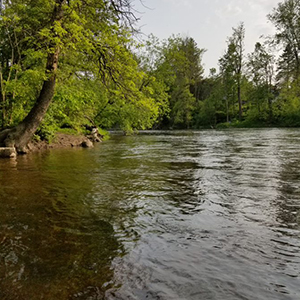Water chemistry and periphyton biomass in the Rideau River: Have conditions changed after 24 years?

Submitted: 17 November 2021
Accepted: 29 June 2022
Published: 4 August 2022
Accepted: 29 June 2022
Abstract Views: 2560
PDF: 399
HTML: 150
HTML: 150
Publisher's note
All claims expressed in this article are solely those of the authors and do not necessarily represent those of their affiliated organizations, or those of the publisher, the editors and the reviewers. Any product that may be evaluated in this article or claim that may be made by its manufacturer is not guaranteed or endorsed by the publisher.
All claims expressed in this article are solely those of the authors and do not necessarily represent those of their affiliated organizations, or those of the publisher, the editors and the reviewers. Any product that may be evaluated in this article or claim that may be made by its manufacturer is not guaranteed or endorsed by the publisher.
Similar Articles
- Silvia TAVERNINI, Daniele NIZZOLI, Giampaolo ROSSETTI, Pierluigi VIAROLI, Trophic state and seasonal dynamics of phytoplankton communities in two sand-pit lakes at different successional stages , Journal of Limnology: Vol. 68 No. 2 (2009)
- Tímea Chamutiová, Ladislav Hamerlík, Katarzyna Szarlowicz, Radovan Pipík, Dušan Starek, Ferdinand Šporka, Marcela Přidalová, Lucia Sochuliaková, Peter Bitušík, Historical development of three man-made reservoirs in a mining region: A story told by subfossil chironomids , Journal of Limnology: Vol. 77 No. s1 (2018): Recent advances in the study of Chironomidae: An overview
- Stephan HÜLSMANN, The combined effect of bottom-up and top-down factors on life history and reproduction of Daphnia in the field: is a strategic dilemma underlying population declines? , Journal of Limnology: Vol. 70 No. 2 (2011)
- Jan SYCHRA, Zdeněk ADÁMEK, The impact of sediment removal on the aquatic macroinvertebrate assemblage in a fishpond littoral zone , Journal of Limnology: Vol. 70 No. 1 (2011)
- Renata TREVISAN, Claudia POGGI, Andrea SQUARTINI, Factors affecting diatom dynamics in the alpine lakes of Colbricon (Northern Italy): a 10-year survey , Journal of Limnology: Vol. 69 No. 2 (2010)
- Valeria ROSSI, Carlo BELLAVERE, Giorgio BENASSI, Andrea GANDOLFI, Eletta B.A. TODESCHI, Paolo MENOZZI, Spatial segregation of Darwinula stevensoni (Crustacea: Ostracoda) genotypes in lentic and lotic habitats of Northern Italy , Journal of Limnology: Vol. 63 No. 1 (2004)
- Anna VISCONTI, Marina MANCA, Seasonal changes in the δ13C and δ15N signatures of the Lago Maggiore pelagic food web , Journal of Limnology: Vol. 70 No. 2 (2011)
- Michal KRATOCHVÍL, Martin ČECH, Mojmír VAŠEK, Jan KUBEČKA, Josef HEJZLAR, Josef MATĚNA, Jiří PETERKA, Jiří MACHÁČEK, Jaromír SEĎA, Diel vertical migrations of age 0+ percids in a shallow, well-mixed reservoir , Journal of Limnology: Vol. 69 No. 2 (2010)
- Rossano Bolpagni, Mariano Bresciani, Stefano Fenoglio, Aquatic biomonitoring: Lessons from the past, challenges for the future , Journal of Limnology: Vol. 76 No. s1 (2017): Aquatic biomonitoring: Lessons from the past, challenges for the future
- Tomáš JŮZA, Mojmír VAŠEK, Jan KUBEČKA, Jaromír SEĎA, Josef MATĚNA, Marie PRCHALOVÁ, Jiří PETERKA, Milan ŘÍHA, Oldřich JAROLÍM, Michal TUŠER, Michal KRATOCHVÍL, Martin ČECH, Vladislav DRAŠTÍK, Jaroslava FROUZOVÁ, Eva HOHAUSOVÁ, Jiří ŽALOUDÍK, Pelagic underyearling communities in a canyon-shaped reservoir in late summer , Journal of Limnology: Vol. 68 No. 2 (2009)
<< < 62 63 64 65 66 67 68 69 70 71 > >>
You may also start an advanced similarity search for this article.

 https://doi.org/10.4081/jlimnol.2022.2065
https://doi.org/10.4081/jlimnol.2022.2065





